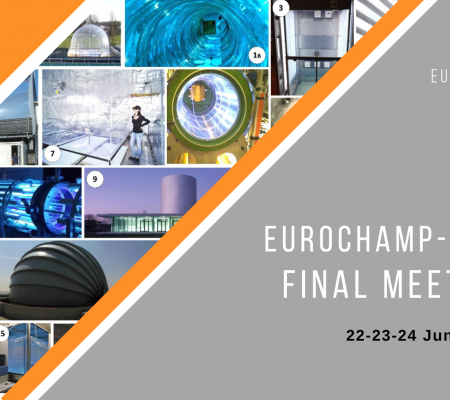| General information | |
| Access mode | Physical access |
| Infrastructure name and acronym | Aerosol physics, chemistry and toxicology research unit (ILMARI) |
| Photos | |
| Location | Kuopio, Finland 62.8891 N, 27.6290 E |
| Website | http://www.uef.fi/en/web/ilmari |
| Legal name of organisation operating the infrastructure | University of Eastern Finland (UEF) |
| Description of the infrastructure | |
| Brief general description of the infrastructure to which access is offered |
The ILMARI chamber has been designed for performing aging studies of emissions from different sources in atmospherically relevant conditions. The suite of sources includes biomass burning appliances and vehicles mounted on a chassis dynamometer. |
| Services currently offered by the infrastructure and its research environment |
The services offered by the infrastructure include:
- Access to the full equipment of the ILMARI chamber -Technical assistance by experienced aerosol physicists and laboratory engineers - Personnel to operate the full ILMARI facility - Copy of all the level 0 data at the end of the campaign - Data treatment up to level 1 when requested
- Daytime access to the lab spaces if requested - In-campus accommodation - Guest office and internet access for visitors - Support for ordering chemicals and consumables |
| Modalities of access and support offered under EUROCHAMP-2020 | |
| Typical duration of work |
Between 2 and 4 weeks plus the preparatory phase. A typical work includes: - one or two weeks preparation by UEF personnel to carefully prepare the experiments (latest protocol adjustments, connection and preparation of emission sources and measurement instruments, and training on the use of the chamber and on the main services). NB! The infirmation about the campaign timing must be submitted to UEF at least 6 months before the actual measurement campaign, to confirm the availability of the ILMARI facility. - Experiments (1 experiment per day, including week-ends if needed) - Dynamic debriefing and adjustment of experiments during the measurement campaign, if needed - a couple of days for debriefing and ase data formatting, saving and distributing among the users - 1-2 weeks of data processing by UEF personnel for level 1 data availability |
| Community/user type served |
The ILMARI chamber is mainly used for research projects but it is also open to experiments conducted with companies. |
| Scientific and technical support offered | Due to the complexity of ILMARI facility, UEF personnel operates the full facility. Scientific support is available for planning the measurements and for data analysis and interpretation. |
| Logistic and administrative support offered | Administrative support for ordering chemicals and consumables, logistic support for the management of chemicals, including gases (ordering, conservation, provision). |
| Person in charge of access provision at the infrastructure | Annele Virtanen, Professor, annele.virtanen@uef.fi |
| Extended technical information | |
| Physical description |
The ILMARI chamber is a collapsible bag made of Teflon FEP with a shape of a rectangular prism. Dimensions: 3.5 m (L), 3.5 m (W), 2.4 m (H) Volume: 29.4 m3 Surface area: 58.1 m2 Projected surface area: 8-12 m2 Surface-to-volume ratio: 2.0 m-1 S/V ratio: 2 m-1 JNO2 = 0-5.5e-3 s-1
Temperature, pressure, and RH range: The temperature in ILMARI chamber in irradiation experiments can be controlled between 20 and 40 degC and in dark experiments between 15 and 40 degC, although typically the experiments are done at 20 ± 1 degC. The pressure in the chamber is not controlled and is the prevailing atmospheric pressure plus the few pascals overpressure. The relative humidity in the chamber can be adjusted between 3 and 100 %RH but typical humidities are 3-5 %RH for dry experiments and 50%RH for humid experiments.
- Injection and sampling lines through the chamber floor. - A maintenance hatch in the chamber floor for in-chamber access. - The collapsible bag is attached to a movable top frame for pressure control. - Blacklight lamps on two opposite sides of the chamber. - In an thermally insulated enclosure whose inner walls are covered with reflecting aluminium foil. |
| Mechanical description | 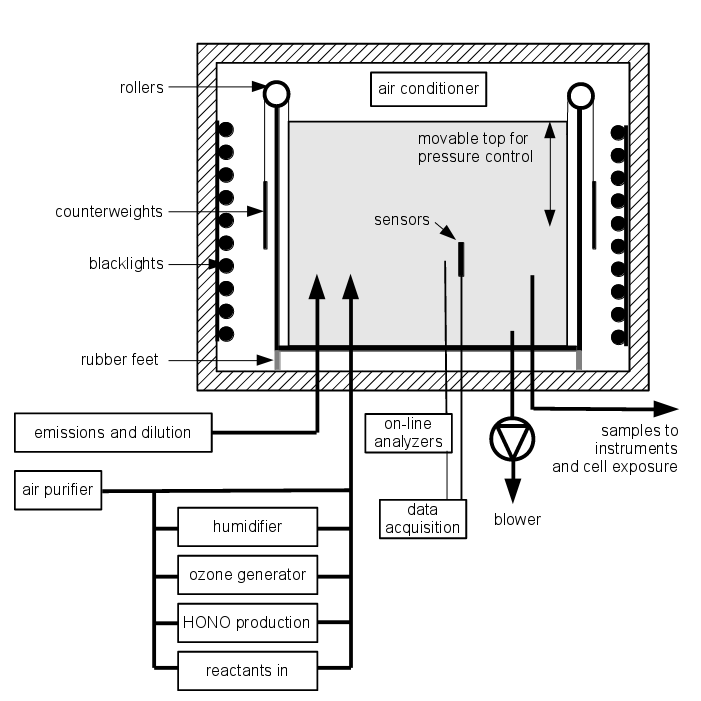 |
| Irradiation spectra | In ILMARI, three types of blacklight lamps have been used: "365 nm", "350 nm", and "340 nm". The usage of the 365 nm lamps has been discontinued.
Spectrum for "340 nm" lamps: 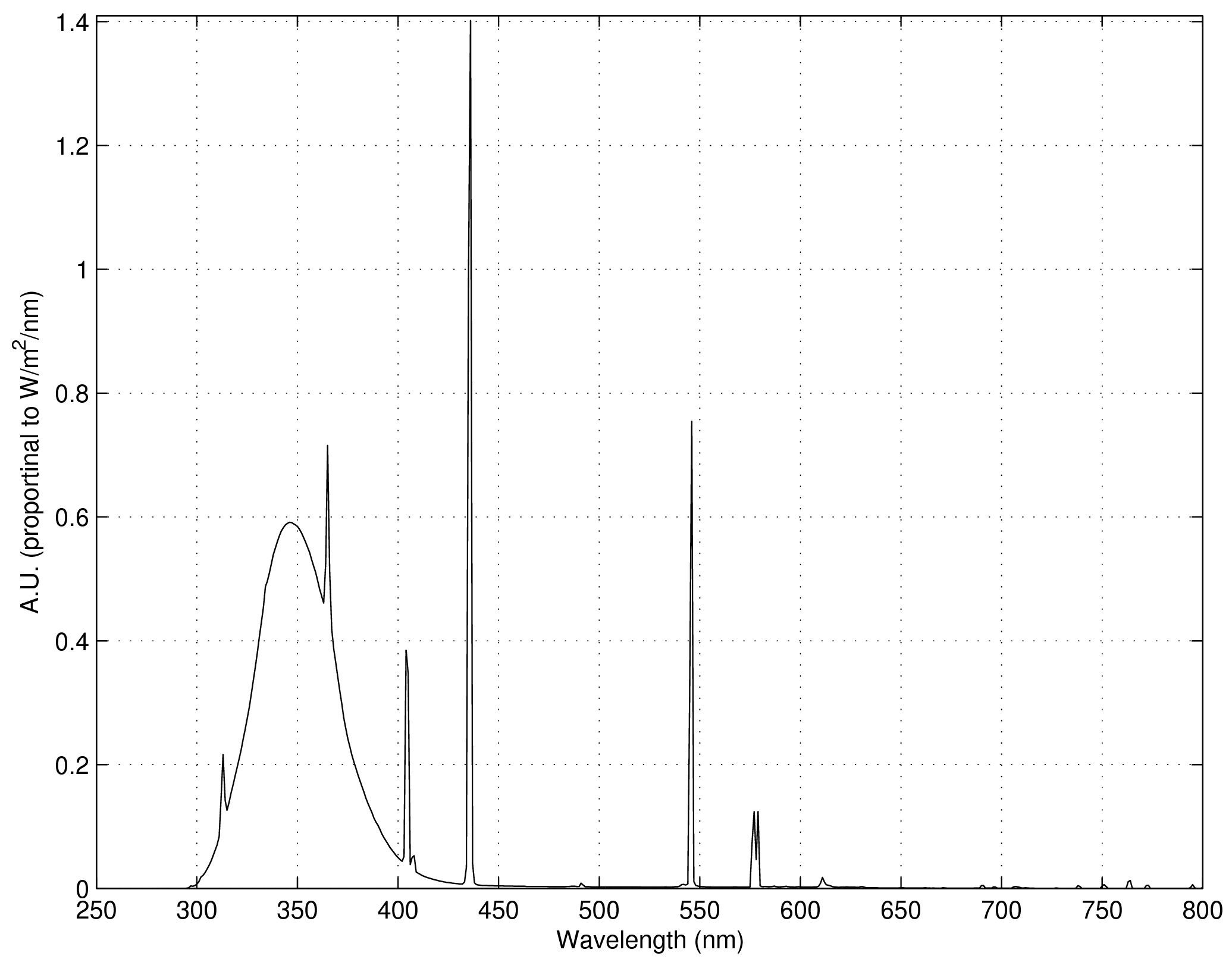 Spectrum for "350 nm" lamps: 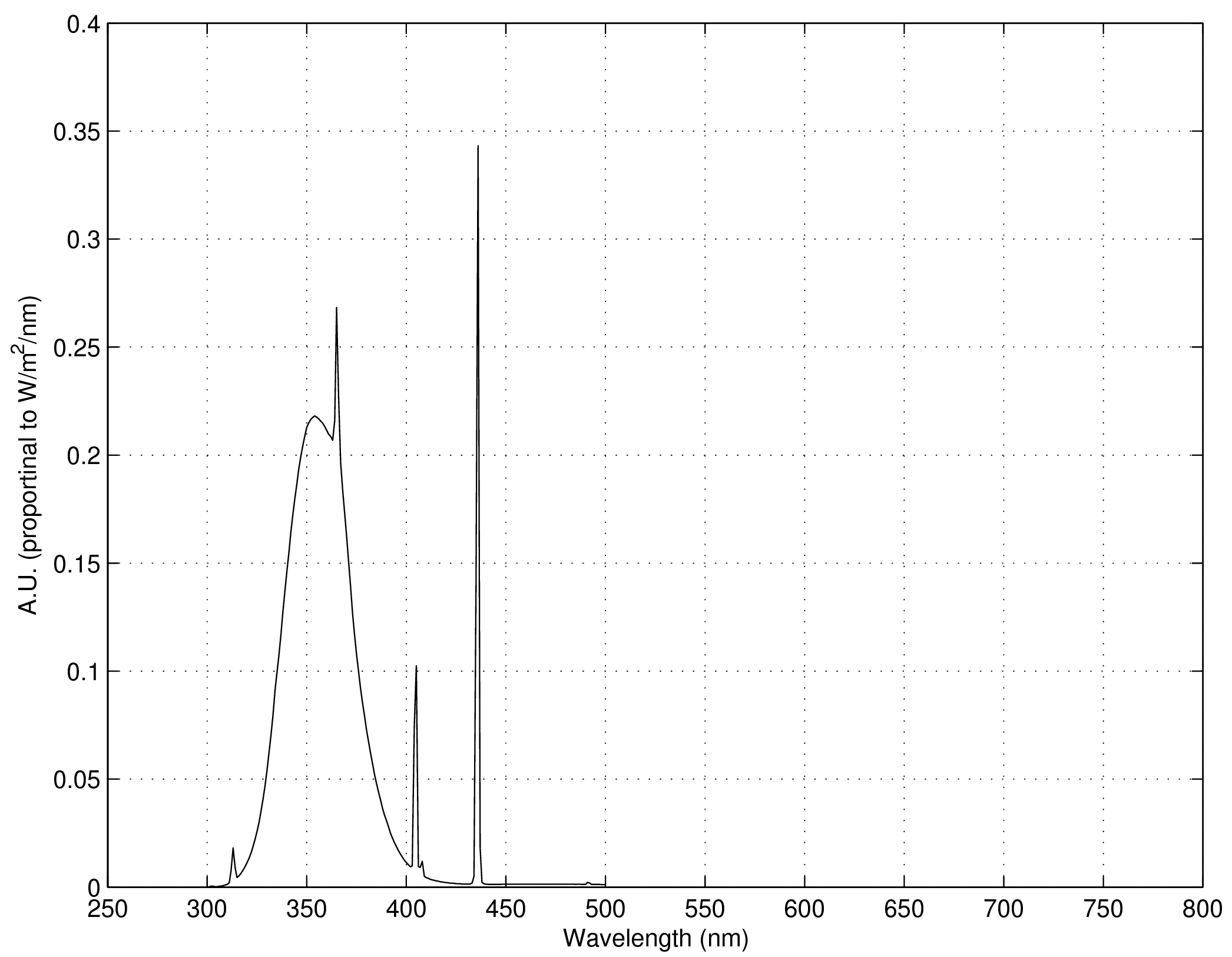 Spectrum for "365 nm" lamps: 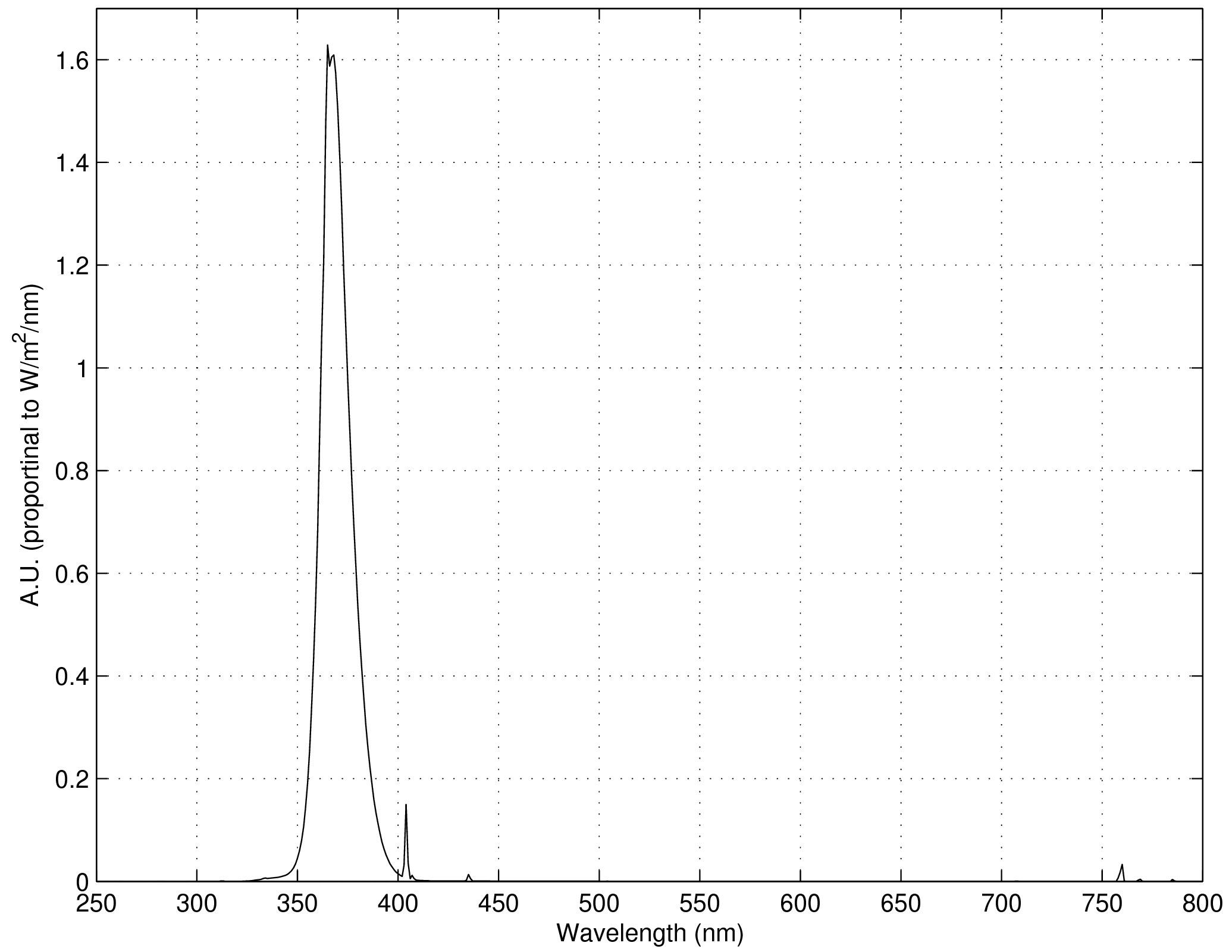 |
| Size dependent aerosol loss/lifetime | 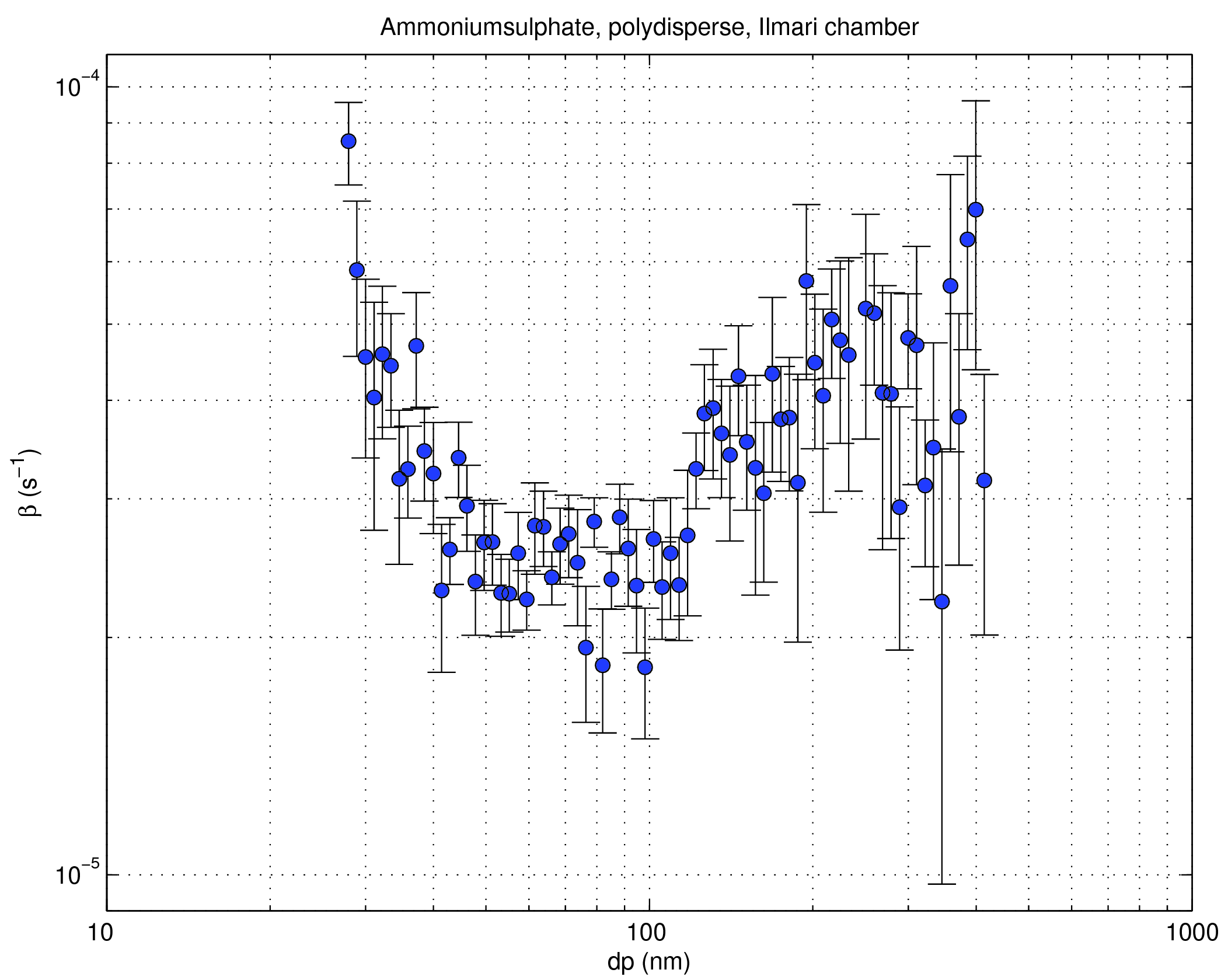 |
| Auxiliary mechanism | 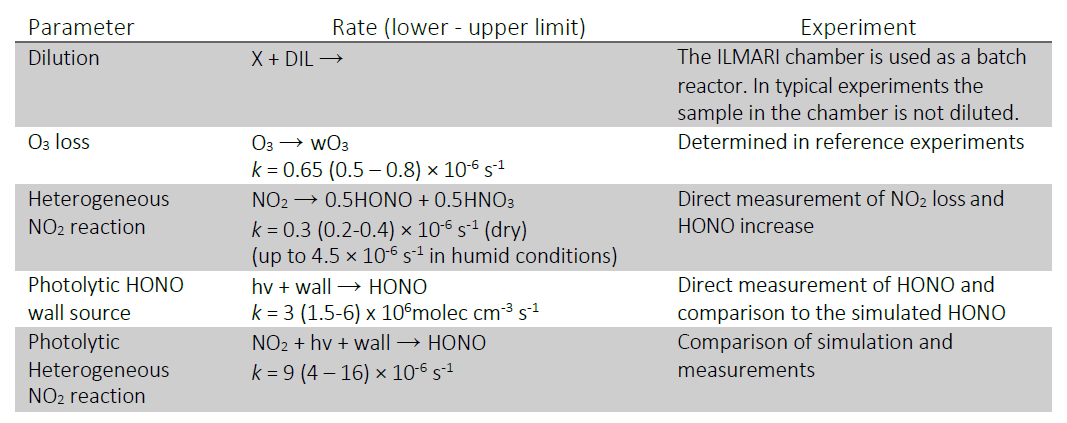 |
| Description paper | Leskinen, A., Yli-Pirilä, P., Kuuspalo, K., Sippula, O., Jalava, P., Hirvonen, M.-R., Jokiniemi, J., Virtanen, A., Komppula, M., and Lehtinen, K.E.J.: Characterization and testing of a new environmental chamber, Atmos. Meas. Tech., 8, 2267–2278, 2015, doi:10.5194/amt-8-2267-2015 |



